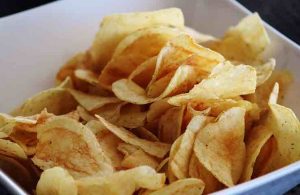 The food industry is notorious when it comes to billing their products as fresh and healthy when in reality, many of them are nutritional nightmares. Many of us are familiar with the fact that “low fat” doesn’t necessarily mean “low calorie.” Beyond that, though, there is a whole host of buzzwords food manufacturers use to try to trick us into thinking a particular product is healthy for us, when it may be full of preservatives, chemicals and other nasty things many of us wish to avoid putting in our bodies.
The food industry is notorious when it comes to billing their products as fresh and healthy when in reality, many of them are nutritional nightmares. Many of us are familiar with the fact that “low fat” doesn’t necessarily mean “low calorie.” Beyond that, though, there is a whole host of buzzwords food manufacturers use to try to trick us into thinking a particular product is healthy for us, when it may be full of preservatives, chemicals and other nasty things many of us wish to avoid putting in our bodies.
How can any consumer know what to avoid? Here are some of the less familiar terms and other tricks food manufacturers and food retailers use to nudge you into buying products you would normally shun. Also, continue reading to find out what foods are almost always safe to put into your grocery basket.
Beware of the Word “Toasted”
“Toasted” sounds so wholesome, doesn’t it? The word brings to mind morning toast with jam, or perhaps marshmallows over a firepit. But just like those marshmallows are chock-full of sugar, toasted items are just as often chock-full of added unhealthy fats.
Quiz: Is Your Body TOXIC? Take the Test...
(get your free personalized report)
The same goes for foods labeled “crunchy,” as in “crunchy veggie straws.”
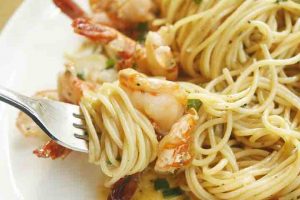 The easiest way to keep food crisp and to give it that crunchy and or toasty texture is to add in extra oils. Sometimes, these can be relatively healthy oils, such as peanut oil, but often, they are heart-damaging saturated and trans fats which can seriously harm your cardiovascular system if you ingest them too often and in excessive quantities. While it is true the human body does need a certain amount of fats to maintain a healthy brain and nervous system, make sure that if you choose to eat one of these higher-fat foods, you’re at least getting fats from healthy oils.
The easiest way to keep food crisp and to give it that crunchy and or toasty texture is to add in extra oils. Sometimes, these can be relatively healthy oils, such as peanut oil, but often, they are heart-damaging saturated and trans fats which can seriously harm your cardiovascular system if you ingest them too often and in excessive quantities. While it is true the human body does need a certain amount of fats to maintain a healthy brain and nervous system, make sure that if you choose to eat one of these higher-fat foods, you’re at least getting fats from healthy oils.
Unfortunately, it can be difficult to tell if a certain food contains trans fats. The FDA does require food manufacturers to label the amount of trans fat in their product. However, they may claim a product has zero trans fats, when in fact it just means the product contains less than 5 percent trans fat. The best way to find out if a food has hidden trans fat is to add up the amount of saturated, monounsaturated and polyunsaturated fats on the label, and subtract that from the total fats. Also, be on the lookout for foods labeled as containing hydrogenated or partially hydrogenated oil. Those words are synonymous with trans fats.
Even if your fave snack is free of trans fats, it may not be nutritious. For example, one brand of veggie straws sold in the health food aisle of many groceries contains zero percent of many of the major nutrients raw vegetables are rich in. If you’re looking for a lower-calorie crunch, they may be fine in moderation. Just don’t count them as one of your six to eight recommended daily servings of veggies.
Avoid Processed Carbohydrates, Including Some Labeled “Whole Grain”
Most everyone knows if they want to get healthy, they should ditch the Wonder Bread and the potato chips. But eliminating processed carbohydrates from your diet can prove trickier than it seems.
Quiz: Is Your Body TOXIC? Take the Test...
(personalized report)
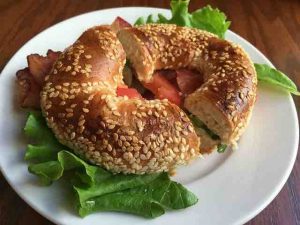 Many loaves of bread, rolls and breakfast carbs such as bagels and English muffins carry the “whole grain” label. However, most consumers don’t know a complete whole grain consists of three parts: the bran, the endosperm, and the germ. When all three of these are intact, yes, you get the heart-healthy benefits of a true whole-grain product. However, per FDA standards, products labeled “whole grain” may include any combination of these three parts of the grain. Often, the three parts of the grain get separated during processing, ground into flour and then mixed in any random combination. This processing strips the grains of the health benefits, rendering them more a processed carbohydrate than a truly healthy superfood.
Many loaves of bread, rolls and breakfast carbs such as bagels and English muffins carry the “whole grain” label. However, most consumers don’t know a complete whole grain consists of three parts: the bran, the endosperm, and the germ. When all three of these are intact, yes, you get the heart-healthy benefits of a true whole-grain product. However, per FDA standards, products labeled “whole grain” may include any combination of these three parts of the grain. Often, the three parts of the grain get separated during processing, ground into flour and then mixed in any random combination. This processing strips the grains of the health benefits, rendering them more a processed carbohydrate than a truly healthy superfood.
And processing matters. Many processed carbs contain high levels of the chemical acrylamide, which also appears in construction materials, cosmetics, and other non-food items. Tests have proved this chemical to have carcinogenic properties.
So if the words “whole grain” on the label mean nothing, what can you look for if you want to find a bread or other carb product which is truly healthy? Look for the following words: brown rice, bulgur, buckwheat, quinoa, rolled oats, whole oats, whole rye or whole grain barley, to name just a few.
Beware of Hidden Sugars in Foods Billed as Sports Supplements
Every time you turn around, it seems another product appears promising to give you more energy, more stamina, and more endurance. These products claim to do anything from giving you proverbial wings to just getting you through that 3 p.m. slump. And it’s true that many of these products may, in fact, give you a momentary boost in energy — followed by a devastating crash. Why? Because most energy products depend upon an enormous amount of sugar to provide that blood sugar energy boost. But, since these products rely on simple sugars, once they pass through your system, your blood sugar crashes back down to an even lower level than previously.
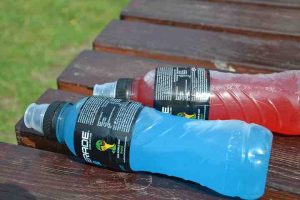 Energy drinks are notorious for being high in sugar, as well as containing a potentially unhealthy level of caffeine. According to Caffeine Informer, many of the popular energy drinks on the market have well more than the 25 grams of sugar considered to be the max intake daily for women, and even more than the 37 grams recommended as the maximum sugar intake for men. One such energy drink topped out at a whopping 56 grams of sugar — more than twice the recommended amount of sugar for a full day for a woman, all in one drink.
Energy drinks are notorious for being high in sugar, as well as containing a potentially unhealthy level of caffeine. According to Caffeine Informer, many of the popular energy drinks on the market have well more than the 25 grams of sugar considered to be the max intake daily for women, and even more than the 37 grams recommended as the maximum sugar intake for men. One such energy drink topped out at a whopping 56 grams of sugar — more than twice the recommended amount of sugar for a full day for a woman, all in one drink.
Energy-boosting foods are likewise notorious for their sugar level. For example, Jelly Belly jellybeans came under fire for failing to adequately disclose the amount of sugar in its sports beans, jellybeans designed for energy. Often, energy-boosting foods claim to contain dehydrated fruit juice, not sugar. The problem is, when fruits get juiced and dehydrated, the result is pretty much pure sugar.
Other sugars hide in common foods. Barbecue sauce, spaghetti sauces, ketchup, and other shelf-stable products often contain enormous amounts of sugar. Supposedly healthy foods, such as granola can also contain unreasonably high amounts of sugar.
“Lite” Can Mean Just About Anything
Smart shoppers may as well disregard the dreaded “lite” label as meaning anything nutritionally, because, quite frankly, “light,” “lite” or any variation thereof can mean any number of things. It may mean the food has as few as five or 10 fewer calories or less fat than the regular version. It could even indicate the product is lighter in color. It’s really anyone’s guess what the manufacturer means with a “light” label.
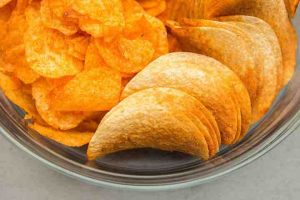 Even more frightening is the fact that many products labeled as light have far higher levels of sugar, as well as higher levels of other chemicals and preservatives than their regular counterparts. This is not to say to never purchase products labeled as light. However, take care to read the label carefully to see what ingredients are substituted, compared to the regular version, to make sure you’re not falling for the label and getting snookered into buying a more chemically laden, unhealthy product.
Even more frightening is the fact that many products labeled as light have far higher levels of sugar, as well as higher levels of other chemicals and preservatives than their regular counterparts. This is not to say to never purchase products labeled as light. However, take care to read the label carefully to see what ingredients are substituted, compared to the regular version, to make sure you’re not falling for the label and getting snookered into buying a more chemically laden, unhealthy product.
What to Eat Instead
The easiest way to remove toxic chemicals, excess sugar and unhealthy fats from your diet is to follow one simple trick: Shop the outer edges of your grocery store first. These spaces are 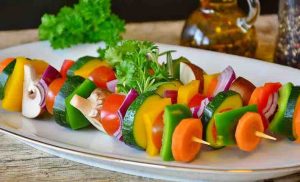 where you’ll find fresh produce, dairy, meats and freshly baked goods free from the preservatives found in packaged brands. Only enter the center aisles for specific, special purchases, and try to do at least 70 percent of your shopping around the outer edges of the store.
where you’ll find fresh produce, dairy, meats and freshly baked goods free from the preservatives found in packaged brands. Only enter the center aisles for specific, special purchases, and try to do at least 70 percent of your shopping around the outer edges of the store.
Also, when buying meat and dairy products, pay attention to how the animals were raised. Many types of meat and poultry products are raised on unnatural diets, leading the meat to be high in fat, and are also shot through with antibiotics. Look for antibiotic-free chicken that is pasture-raised. Likewise, look for pasture-raised, grass-fed beef if you are a meat eater. Aim for organic milk, eggs, and cheeses.
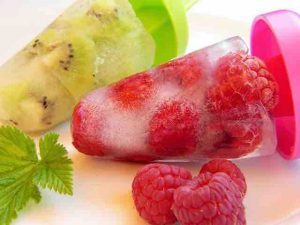 Finally, if you must have a sweet treat to finish off your meal, aim for products with fewer than four ingredients. Ice cream, for example, requires few ingredients to make unless it contains preservatives.
Finally, if you must have a sweet treat to finish off your meal, aim for products with fewer than four ingredients. Ice cream, for example, requires few ingredients to make unless it contains preservatives.
With a little planning, you can avoid being bamboozled by misleading food labels and be well on your way to a healthier, happier life.
Kate is a health and wellness journalist. She enjoys topics focused on holistic health and all-natural living. If you enjoy her work, you can visit her blog, So Well, So Woman.
